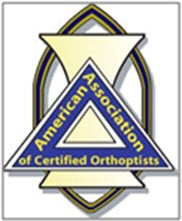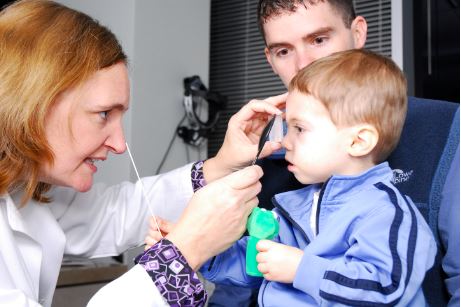Orthoptic Services
What is Orthoptics?
Orthoptics is an ophthalmic field pertaining to the evaluation and treatment of patients with disorders of the visual system with an emphasis on binocular vision and eye movements.
What is an Orthoptist?
They are allied health professionals uniquely skilled in evaluation and treatment of children and adults with eye movement difficulties. Their specialty is strabismus, amblyopia and double vision. They are recognized among the highest levels of ophthalmic medical personnel.
The word “orthoptist” is of Greek origin and is derived from:
“ortho” = straight + “opsis” = vision
Who needs to see an orthoptist?
A patient who has one or more of the following:
- Strabismus (misaligned eyes)
- Amblyopia (poor vision)
- Poor stereopsis (depth perception)
- Headaches or eye strain with reading
- Nystagmus (wiggly eyes)
- Double vision
What treatment does the orthoptist give?
The orthoptist will perform tests to measure visual acuity, focusing ability, binocular functions and eye movement. Through interpretation of test results and clinical evaluation, the orthoptist helps the ophthalmologist design a treatment plan which may include amblyopia treatment, orthoptic exercises, glasses, prisms or eye muscle surgery.
Occlusion treatment is given for amblyopia and optical aids (e.g. lenses, prism, bifocals) to encourage control and/or relieve symptoms like double vision. Orthoptic home exercises are given for reading problems due to convergence and focusing difficulties and to improve binocular vision.
What training does the orthoptist have?
Orthoptists must complete two years of post-graduate training in a program accredited by the American Orthoptic Council (AOC). They must pass national written and practical examinations that are given by the AOC. Certification by the AOC is maintained through medical education by attending national and regional ophthalmology and orthoptic meetings.
Will I see the orthoptist without seeing the ophthalmologist?
 Some patients are referred from the ophthalmologist to the orthoptist for patching treatment, prism treatment and patients who need strabismus measurements and evaluation for their binocular vision. When these patients are seen, they may not see the ophthalmologist on the same day as the orthoptist.
Some patients are referred from the ophthalmologist to the orthoptist for patching treatment, prism treatment and patients who need strabismus measurements and evaluation for their binocular vision. When these patients are seen, they may not see the ophthalmologist on the same day as the orthoptist.
Rachael Jenkins has worked in the field of orthoptics for 25 years. She has been on faculty at Baylor College of Medicine, Texas Children’s Hospital and Kelsey Seybold clinic. She joined Asheville Eye Associates in October 2015.



Recent Comments